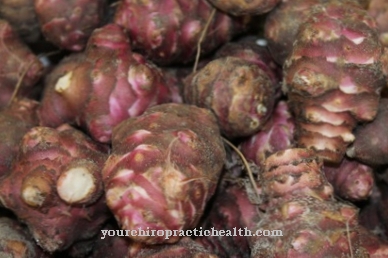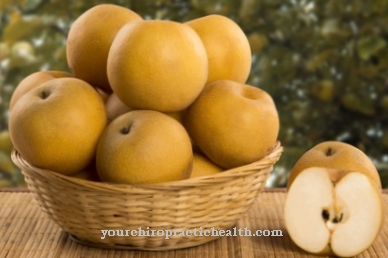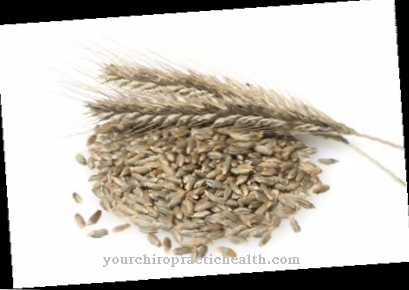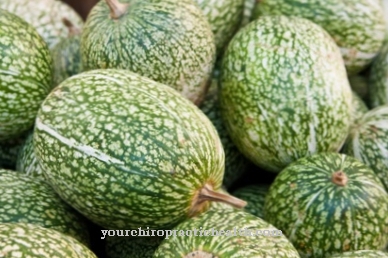The almond belongs to stone fruit because it is the core of a fruit. It originally comes from Asia, but nowadays it also grows in Spain, Italy and America, for example. Consumption of almonds has been very popular in the past to cure various diseases because they have health benefits.
What you should know about the almond

The almond belongs to the rose family and has been cultivated for around 4000 years. The almond trees grow up to six meters high and prefer a mild climate. The pink and white flowers appear in spring. The small, elongated fruits that develop from it in midsummer can be harvested once a year.
Inside is the almond kernel, which is packed in a casing. These are elongated, egg-shaped stone fruits with a gray, leather-like fruit skin. A distinction is made between two types of almonds: the sweet and the bitter almond. In terms of appearance, the latter hardly differ from the sweet stone fruits, but they are unsuitable for human consumption because they contain the glycoside amygdakine, which contains hydric acid.
The exclusive cultivation of bitter almonds on designated plantations serves the purpose of obtaining bitter almond oil, which is freed from hydrogen cyanide compounds and used to flavor liqueurs.
It is also used in small quantities to make baked goods such as marzipan. The harvest season for the sweet almonds is usually from August to October. This is usually done automatically. The shell is then removed or at least scratched so that no mold forms. The fruits are dried in warehouses, silos or outdoors. The almond has a slightly bitter, nutty and somewhat sweet taste.
Importance to health
The almond provides valuable antioxidants and provides plenty of nutrients and energy. Regular consumption can also lower the risk of cardiovascular disease. Just 20 grams a day are enough to cut the risk in half. The almond also lowers the cholesterol level. The high proportion of folic acid is particularly important during pregnancy.
For example, the mineral magnesium helps to maintain normal bones and teeth, reduce fatigue, maintain muscle function and achieve a normal electrolyte balance. The vitamin E contained in the almond protects the body's cells from oxidative stress. Some ingredients generally strengthen the immune system and have a preventive effect against cancer and stomach and intestinal problems. Thanks to the high proportion of fiber and unsaturated fatty acids, the moderate consumption of almonds is also suitable for a diet, because they regulate the appetite and fill you up quickly and continuously.
Ingredients & nutritional values
| Nutritional information | Amount per 100 gram |
| Calories 576 | Fat content 49 g |
| cholesterol 0 mg | sodium 1 mg |
| potassium 705 mg | carbohydrates 22 g |
| protein 21 g | vitamin C 0 mg |
Almonds have a high nutritional value because 100 grams contain around 580 calories. They are also rich in protein, almond oil, minerals, vitamins and carbohydrates, but they contain little sugar. Almonds are one of the vegans' favorite ingredients, because they contain almost 20 percent protein as in mozzarella cheese. The skin that encloses the almond is rich in antioxidants and fiber.
Almonds consist of high quality fat, which thanks to its positive composition regulates the metabolism instead of putting a strain on it. Almonds are also very good suppliers of B vitamins, vitamin E and beta-carotene. In addition, they provide the body with twice as much of the bone-strengthening mineral calcium as is the case with yogurt and twice as much of the blood-forming iron as lean lamb provides. Other valuable ingredients include the trace elements zinc, fluorine and selenium.
Intolerances & allergies
Since almonds are difficult to digest, they have to be chewed thoroughly so that they do not lie in the stomach for so long and do not leave the body almost unused. When buying sweet almonds, there are also some bitter specimens included.
Up to five percent are considered harmless, but a higher amount can be life-threatening in children. In addition, almonds that have been poorly stored can contain traces of aflatoxin, the carcinogenic mold toxin. Optimal storage is therefore very important. People who are hypersensitive to salicylic acid, the natural preservative, should not eat almonds.
Shopping & kitchen tips
Shelled almonds are mainly offered at Christmas time. If stored in a cool, dry and dark place, they can be kept for around nine months. When buying, the shake test can help to determine whether the almonds are fresh. If the kernels rattle in the shells, then they are already old and shriveled, so they should not be chosen.
The hard shell should be dry and undamaged. It is advisable to buy loose seeds instead of packaged goods. The reason for this is: Moisture can build up in the packaging, which promotes mold growth, which creates the carcinogenic aflatoxin. Almonds that have already been crushed can be purchased all year round. The best before date, which is printed on the plastic bag in which they are usually found, should be observed. If opened packages are always tightly closed, the aroma will be retained for six months. If stored improperly, the fat quickly becomes rancid, making the almonds inedible.
Preparation tips
The almond is well suited for nibbling, for making baked goods such as marzipan and for desserts. The roasted almond is often used as a flavor carrier. It goes very well with meat and fish dishes, for example, and goes perfectly with fresh salads. Desserts can also be garnished with it. They are also popular for ice cream. For sports and school, the almond is a vitamin and mineral-rich energy donor.
Roasted almonds are a popular crunchy candy, especially at Christmas markets. The caramelized almonds are tempting. In the kitchen, ground, chopped and sliced almonds are primarily used. This can be used to bake cookies and cakes, for example. It is also a classic to make nougat and almond liqueur from the almonds.The delicate almond butter delights as a spread. Almond oils are very popular in cosmetics. The nourishing substances are contained in numerous care products and primarily ensure a velvety shimmer of the skin.
The valuable ingredients in almond bran cleanse the skin and when drunk as an oil they have a slight laxative effect. The various vitamins, for example vitamins A, B and E, as well as the oils in almond milk have a healing and cooling effect, for example for light abrasions or dry skin. In many creams, the almond oils ensure firmer skin.













.jpg)

.jpg)
.jpg)











.jpg)